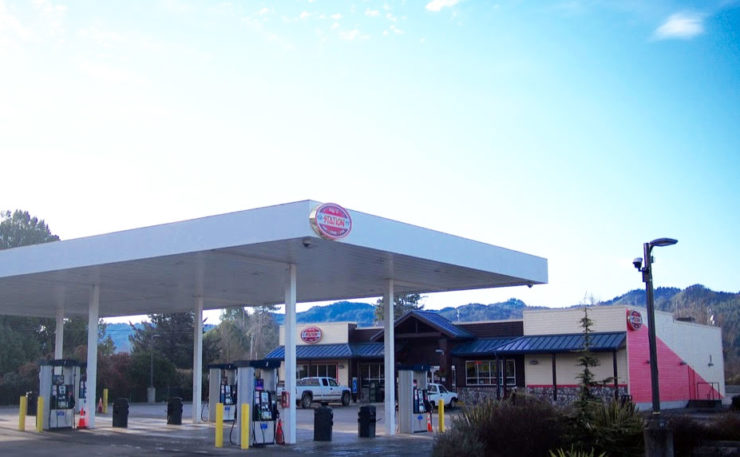This fall, we are kicking off a new “Solar Plus” (Solar+) project to investigate how real-time coordination between clean energy systems can yield performance improvements that benefit both building owners and utility operations. Research and development over the past decade has successfully reduced the cost of solar arrays, batteries, building controls, and electric vehicles. Many of the emerging challenges we now face are related to the large-scale deployment and integration of distributed clean energy components. For example, electrical distribution circuit capacity is limited (in order to prevent power lines from overheating), which in turn limits the downline capacity of distributed generation systems. This Solar+ project will develop control strategies to coordinate onsite resources to reduce their combined footprint on the power system, effectively increasing the capacity of the grid to host clean energy technology.
Our pilot site is a gas station and convenience store at the Blue Lake Rancheria (BLR) in Blue Lake, California. Convenience stores typically have sizable loads, including HVAC and refrigeration, which require backup power. Many of the sites also have significant potential to host rooftop solar. By working with a very common building type (there are 12,000 convenience stores in California alone), we can design with replication in mind.
Over the next two and a half years we will design and install a Solar+ system at the BLR and measure the value of distributed energy coordination. Our project will develop: (1) a hardware design guide for integrated Solar+ packages, (2) open-source software for controlling the technology, and (3) guidelines to determine the best locations for investment, given local insolation and onsite potential for system coordination. Our outcomes will be focused on integrating solar, batteries, and advanced building controls into packages that are market ready and can make positive impacts on the future trajectory of California’s built environment.
This project is funded by the California Energy Commission through the Electric Program Investment Charge (EPIC) program. Our key partners are the Blue Lake Rancheria, which owns the gas station, and Lawrence Berkeley National Lab, where a team of researchers is developing open-source “Solar+ Optimizer” software.
Project partners also include Southern California Edison, whose refrigeration system test center data is helping us to develop algorithms, and Pacific Gas & Electric, the local energy utility.















